Ryan Hall's Blog, page 153
July 4, 2017
Harriette Thompson Is The Newest 13.1 World Record Holder
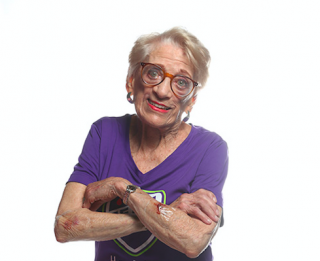
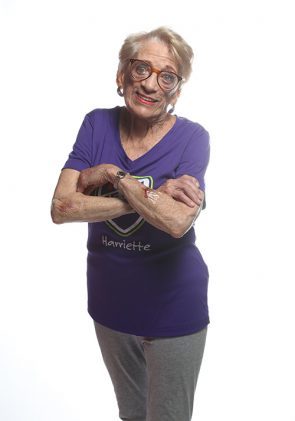
Harriette Thompson should be the poster model for the concept that exercise is key to turning back time. The 94-year-old retired pianist—she’s played Carnegie Hall three times—ran her first marathon in 1999 at the age of 76. She’s since completed 16 marathons and, at the age of 92, set a world record for being the oldest female to complete a marathon. In June at the Synchrony Financial Rock ’n’ Roll San Diego Half Marathon, the two-time cancer survivor and grandmother from Charlotte, N.C., added another record to her collection: oldest woman to finish a half marathon. She completed the race—an experience she calls “unbelievable”—as part of Leukemia & Lymphoma Society’s Team in Training and has raised more than $117,000 for the organization to date. Thompson ran with friends and family by her side, including her two sons and a granddaughter.
After years of running marathons, what made you try a half marathon?
I’ve never been 94 before, plus I had two operations this past year, so I wasn’t sure what I would be able to do. I decided to be more realistic and run a shorter race.
You’ve run at Rock ’n’ Roll San Diego 17 times now. What makes that race so special to you?
San Diego has so much to offer and is so exciting. I had scallops for dinner after my race. I think the scenery is beautiful, and the people are nice.
You could choose just about any hobby, so why running?
It used to be considered kind of crazy to run. In the 70s people started to realize it was a healthy thing to do. My husband and I started running. I remember visiting my brother in Washington, D.C., in 1978, and we ran together. I’ve been very active since then but didn’t think about running a marathon until 1999.
Why do you think fundraising and racing go together so well?
I have very generous friends. And I raise money for a good cause, Team in Training. I’ve had cancer; my husband died of it, as have friends. I think those that run and feel fortunate not to have cancer, or maybe they’ve had it but gotten better, feel it’s a good partnership. One friend at my retirement center donated $1,000.
You rely on the power of positivity to keep going when runs get tough. How did you come to that approach?
Your attitude is most of the battle, I think. If you are really thinking positively, and thinking you can do it, you’ll be able to. It’s come to me through a lifetime of being positive. I reflect some of my mother’s wonderful attitude of never complaining and appreciating everything we had.
What do you think about when you run?
When I’m running for a long time, or maybe I’m between bands at the race, I’ll think through my piano music. A lively composition with a good tempo helps pass the time and increases my energy. The “Études”by Frédéric Chopin are very technical and each one is a challenge. It’s like my inner headphones!
What sort of sports did you do before you began running?
I really sort of majored in swimming. I got my instructor’s certificate at Dickinson College. I always roller-skated a lot. Before I got my driver’s license, I used to ride my bicycle to piano lessons every Saturday. It was 13 miles each way! Riding a bicycle is easier than running, but in those days there were no gears, so it was challenging.
What does your marathon and half-marathon training program look like?
I live in a retirement center with wonderful exercise programs. Every day during the week, they have classes in the morning, like Pilates and strength training. I did 31 classes in the month of March to prepare for the race. At night, if it’s raining, I go to the exercise room and get on the treadmill. When it’s not raining, I run around the lake. Five laps is a mile.
Do you eat anything special before a race?
I eat pasta the night before and peanut butter and a banana the morning of.
What’s it like to break records with your running?
I’m not in this to break records, but it’s a nice thing to have happen. It’s just a bonus. My goal is to help fight leukemia.
What’s next for you?
If I’m able, because it does take a lot of discipline, I would like to play another concert. I play at my retirement center and other places. After the race, I got to be on stage with Michael Franti. I danced a little bit and he had me sing along. His music is intoxicating.
RELATED: Oldest Half Marathon Finisher Harriette Thompson Appears on Good Day Charlotte
The post Harriette Thompson Is The Newest 13.1 World Record Holder appeared first on Competitor.com.
June 30, 2017
What You Need In Your Running To-Go Bag
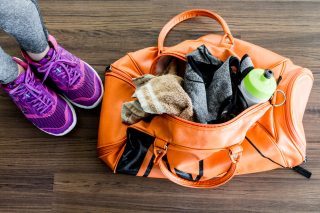
The running paths near my apartment are pretty much all right next to major roadways. Cars constantly whip by and there are several intersections to cross. Additionally it’s hard to hear the birds chirping, not to mention all of the other nature sounds that make running outside so wonderful.
So I often find myself driving to my parents’ house, which is also a lot closer to work, to get in a morning run on their more-peaceful running path—the W&OD for you Northern Virginia folks.
That requires some planning, which means packing a to-go bag at least twice a week. This ensures that I have what I need to get out the door, get my workout in and get to my office without looking like I’ve just run through the Sahara Desert.
Here are the essentials for a running to-go bag.
Clothing and shoes
Obviously first on the list are running shoes and clothes. You can’t run without them. (Well, you can try, but it might not be that pleasant. Hellooooo, chafing.) It’s easier to pack for my spring and summer runs because I don’t need any layers. Go through a mental checklist to make sure you remember a sports bra if you’re a gal and running socks, regardless of gender. If I almost forget something, it’s one of those two items. Make sure you check the weather as well. Rain always means I need a hat. Bright sun, especially in the summer, means I pack sunglasses. And always fluctuating temperatures dictate whether I’m wearing pants, capris, shorts, T-shirts or sweaters.
Whatever you need to clean up
No one wants to get to a post-run destination all hot and bothered. If you have access to a shower, check beforehand to see if it has shampoo, conditioner and towels. Local recreation centers often don’t. More expensive gyms with high membership fees do. Parents’ homes also do. If you don’t have time for a full shower, take along some dry shampoo and full-body wipes. Local running stores usually stock wipes geared toward athletes. Last, but not least, deodorant is a must, and for us girls so are makeup, perfume and a hair brush. Don’t have time to dry your hair? Put wet hair into a ponytail for a few hours as it dries.
RELATED: 7 Essential Pieces of Gear For Traveling Runners
Empty or full water bottle
This depends on your mode of transportation and length of run. If you’re taking a flight for, say, a race, then you’ll need an empty water bottle or hydration belt to get past the TSA. If you’re closer to home, you likely won’t need water on a short run. But don’t forget a bottle, belt or hydration backpack if you’re going for a long run, especially in hot weather.
GPS watch or other fitness wearable
If you use a GPS watch or other fitness wearables such as a FitBit, JawBone or the Apple Watch, make sure it is charged and in your bag the night before. Or lay it out with the clothes you’re wearing before you head out the door. If you’re traveling, you may also want to take a charger, or at least make sure your device is fully charged before hitting the road or skies.
Running belt & ID
I think you should always run with a cell phone in case of emergency. ID bracelets are also a good idea, particularly if you have any medical conditions or allergies. At the very least, a driver’s license can be tucked into a running belt. Speaking of belts, there are a ton of styles out there, many of which are barely noticeable. You can find one that easily fits a cell phone. Slap it on and forget it’s even there until you really need it.
Change of clothes
Whether it’s yoga pants and flip-flops (my post-race favorite) or a dress and high heels (for work or a nice brunch), having something to change into after you clean yourself up is essential. Tailor the outfit to your needs and where you’re going.
RELATED: Do The Shoes You Where While Not Running Matter?
The post What You Need In Your Running To-Go Bag appeared first on Competitor.com.
Steve Spence Keeps Streak Of Sub-5 Mile Alive For 42nd Year
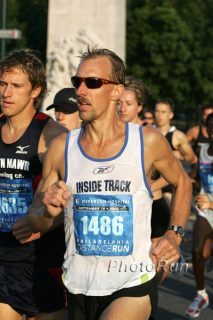
Steve Spence, Photo: Photorun.net
By this point, saying “Steve Spence does it again!” is getting a little redundant. And yet it’s his redundancy that is so impressive.
Spence, one of America’s most celebrated distance runners, beat the 5-minute mark on the mile for the 42nd-consecutive year, according to Herald-Mail Media. Earlier in the week Spence posted a 4:55.7 at North Hagerstown High School (Hagerstown, Md.) during the Pete Wright Memorial All-Comers Track & Field Series.
His streak began in 1976 and is believed to be the longest of its kind.
“It’s good to have this year out of the way,” he told the Herald-Mail. “I try to keep it fun, but it’s starting to become a little stressful because of the expectations I have of myself. Each year it gets a little harder. I have to train more. A few years ago, I could just go out and do it.”
55-year-old Steve Spence just ran a 4:55.7 mile at North Hagerstown, breaking 5:00 for the 42nd straight year. pic.twitter.com/LO1DnfLg8I
— Andy Mason (@Andrew_M_Mason) June 27, 2017
Paced by a couple of younger runners, the 55-year-old ran the first half in 2:29 and the second half in 2:26. His final quarter was 72 seconds.
Spence, one of America’s strongest marathoners in the 80s and 90s, took bronze at the 1991 world marathon championships. He was 12th in the 1992 marathon at the Barcelona Olympics.
Spence, who serves as Shippensburg University’s men’s and women’s cross-country coach, is also the father of professional runner Neely Spence Gracey. Obviously, she was impressed with dad’s performance.
Who’s my fav runner? My DAD! He just ran 4:55 for the win in his 42nd year going sub 5. #MyHero #PoppaSpence #OldManStrength #WorldRecord ? pic.twitter.com/7K5f0vFkTs
— Neely Spence Gracey (@neelysgracey) June 27, 2017
The post Steve Spence Keeps Streak Of Sub-5 Mile Alive For 42nd Year appeared first on Competitor.com.
86-Year-Old Bill Thorn Continues His Peachtree Road Race Streak
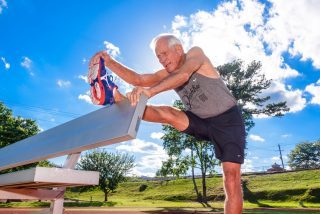
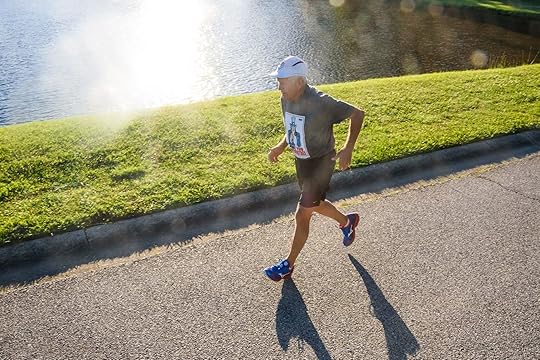
Photo: Steve Thrasher
On July 4, almost 60,000 runners will line up for the 2017 AJC Peachtree Road Race 10K in Atlanta. In its 48th year, Peachtree is the world’s largest 10K and the biggest race of any distance in the United States. Among all of those participants, 86-year-old Bill Thorn will be the only person on the starting line who has run the race every single year.
Thorn moved to the Atlanta area in the 1950’s, shortly after he married his wife of 63 years. He guesses he started running around 1967. He still coaches high school track and cross country at the Christian school he helped to establish south of Atlanta in 1989.
Thorn recalls that the first Peachtree 10K in 1970 was nothing like today’s current race. According to the Atlanta Track Club website, only around 150 people gathered at the corner of Peachtree and Roswell Road. Thorn brought his two sons, then age 10 and 6, who ran the entire race with him. He believes his son is the youngest person to ever compete in the race.
“It was basically started as kind of a family type situation because just about everyone knew each other that ran that first year,” says Thorn. “So you just showed up and started having fellowship at the end of it.”
Even though the first year was small, Peachtree quickly grew in popularity. By 1978, there were 6,500 finishers. In 1980, only ten years after the inaugural event, the race was capped at 25,000 participants.
RELATED: 4 Reasons To Run A Race On The Fourth Of July
One of Thorn’s most memorable Peachtree experiences happened during those early years, when the event was quickly gaining popularity. His goal was to break 40 minutes in the 10K after years of finishing just over that mark. However his mission was almost thwarted by the crowds.
“That year more people showed up than they had anticipated,” Thorn recalls. “You could kind of sense it as you went on.”
Thorn estimates that he got held up almost two blocks from the end of the race. The one finishing chute organizers had set up was not large enough to handle the swelling crowds. He finally determined that he barely run under 40, but was shocked to see how much his local race had grown.
“The whole entire ordeal was never planned in any way,” says Thorn of the Peachtree’s growth. “It just started off when they attempted to see if Atlanta would let them run it.”

Photo: Bill Thrasher
The key to Thorn’s longevity in running is his workout routine. He spends about an hour and thirty minutes each day performing a combination of strength and cardio exercises. His cardio includes running, walking, stationery bike, or running on a mini trampoline. He says the most important aspect though is consistency.
“I don’t just workout just like one day,” says Thorn. “I work out 365 days a year.”
For this year’s race, Thorn teamed up with Mizuno for their #whyIPeachtree campaign. The brand is highlighting the compelling stories of local runners and sharing them on social media, hoping to inspire thousands of race participants. Thorn admits he has not seen it (he is not on social media) but loves speaking about why Peachtree means so much to him. He is excited about this year’s race but has a bigger plan in mind.
“My goal is to reach 50. When I say my goal, I’ll be 87 in September, so you know I’m closing out so to speak,” Thorn says with a laugh. “Really in order to run 50 of them, I have to do them one at a time. I got to take care of business with this one first and then we’ll go to the next.”
RELATED: Mizuno Releases Patriotic Limited Edition Shoe For Peachtree Road Race
The post 86-Year-Old Bill Thorn Continues His Peachtree Road Race Streak appeared first on Competitor.com.
Why Runners Should Train In The Heat
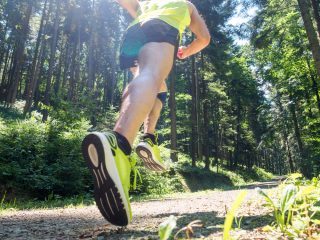
Every transition into summer brings a bit of whining about the weather. It seems as though everyone gets obsessed with being comfortable. However, I don’t believe anyone ever improved his or her racing performance, weight loss or body image by being comfortable. It’s when you’re especially uncomfortable that you start to get a training effect. So, who wants to suffer a little?
Training in the heat definitely has its advantages, especially if your goal race is expected to reach temperatures above 75 degrees, which is highly likely if you’re racing within the next three months. If you want to be prepared, you should train in similar conditions.
Now, before anyone gets too crazy and collapses from heat exhaustion, know that we’re not suggesting you push past your limit. Everyone has a different threshold for heat, so please know where your line is before you cross it.
Pre-Game
Be hydrated! You want to feel the effects of the heat and have it supplement your training, but you need to go into it well-hydrated. Drink water generously for two to three days before a hot run. If you’re looping a route, doing hill repeats or are training at the track, bring a bag of ice with you.
Also dress appropriately if you’re heat-training outside. The best running outfit includes a light-colored cap, mesh or light material tank, light-colored and lightweight shorts, sunscreen and sunglasses.
RELATED: 8 Hats To Keep You Cool-Headed This Summer
Training Effect
Numerous studies have shown that training in heated conditions, two to three times per week for 20 to 90 minutes, can produce a multitude of beneficial training effects. These include:
Lower core temperature at the onset of sweating
Increased plasma volume (Plasma is the liquid component in your blood. If the volume is increased, you can send blood to cool your skin without compromising the supply carrying oxygen to your muscles.)
Decreased heart rate
Increased oxygen consumption
Improved exercise economy
The result? You can run faster and/or more efficiently in all temperatures.
The Workouts
Treadmill: If Mother Nature isn’t supplying the heat you need, run on a treadmill in a room where the temperature is 75-85 degrees. If you want to be outside, put on a light layer of extra clothing. Keep your pace moderate and only run a distance you are used to. This is not the workout to increase pace or distance. Repeat once every three days.
Track: Here’s where the bag of ice comes in handy. Place the bag with your stuff on the infield of the track. Do an easy warm-up for 10 to 15 minutes and then begin some speedwork. Run for up to one mile at 5K pace and then put some ice in your sports bra or under your hat—and repeat. Each time you do this workout, use less ice. Repeat once a week.
Hills: After a mile warm-up, chose a hill you can run up at a comfortable pace in about two to four minutes. Run up, then jog or walk back down, 4-8 times. Do a cool-down walk or jog back and rehydrate immediately. Repeat once a week.
Obviously this is extreme training for some, but runners of all levels can benefit from being a little uncomfortable in all types of weather conditions. As long as you’re safe, don’t fear the heat — go outside and run!
RELATED: The 5 Benefits Of Running On The Beach
The post Why Runners Should Train In The Heat appeared first on Competitor.com.
June 29, 2017
4 Reasons To Run A Race On The Fourth Of July
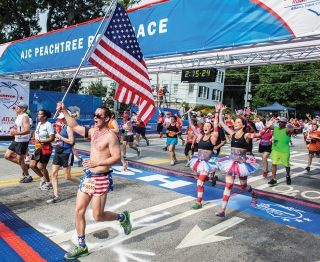
Peachtree Road Race, Photo: Tim Easterday
The only thing better than running a race is running one on the Fourth of July. It seems many Americans agree: According to Running USA, July 4 is now the second most popular holiday among runners, ranking behind only Thanksgiving. In fact, 329,620 runners finished a race on our nation’s birthday in 2016—an all-time record! If you think about it, racing on this day makes perfect sense. In many ways, running a race is the ultimate celebration of the American Dream: You give it everything you’ve got till you cross the finish line, relying on yourself and your inner strength every step of the way. How better to celebrate the sport that makes you feel as free and alive as the country you live in?
Test yourself in the heat while having fun
Depending on where you live, summer running can be pretty miserable thanks to the oppressive heat and humidity. It’s also great training for fall races. Fourth of July races give you a chance to push yourself in the heat in a safe, supported environment after you’ve had a month or more of warm weather to acclimate. Think of it as a patriotic speed workout with a medal and watermelon at the end!
Bust out your patriotic best
Everyone loves a theme, and what better theme exists than freedom? Think of a Fourth of July race as your chance to go absolutely nuts with all the red, white and blue apparel you can get your hands on. Don’t think you have to stop at just your clothes either. Many running companies are starting to make special-edition patriotic shoes. If that’s not enough, get your whole family in on the act. “I love to sport my American flag running gear,” says Jacksonville marathoner and mom of two Kate Brunson. “I’ll be celebrating the Fourth of July at the Celebration 5K with my flag shirt and red, white and blue decorated double jogging stroller. My boys will be waving little flags!” Talk about the ultimate finish line photo!
Celebrate with a free festival
At Fourth of July races, the party doesn’t necessarily stop just because the race has ended! Some races, like the Keep Raleigh Independent 4-Miler, offer free admission to a Fourth of July festival after the race, while others, like the Red, White, and Boom Half Marathon in Minneapolis, feature free hot dogs and ice cream at the finish line. A Fourth of July race can quickly turn into an all-day party and fun for the whole family. Those fireworks are just for you!
Get active before the celebrations begin
One of the reasons so many people love to run on Thanksgiving morning is because they know they’ll indulge in all the delicious food later in the day, and racing gives you a pass to do just that. Fourth of July is no different! With hamburgers, hot dogs, apple pie and plenty of adult beverages likely to be passed around throughout the day, an active start is ideal to get your metabolism going. Plus, participating in a race gives you the chance to celebrate the day with your running friends before enjoying time with your family.
For runners who may not have the holiday off, including medical professionals, an early morning race is a mini-celebration. “I work in the ER around the holiday, so running a race on the Fourth gives me a way to still enjoy something for myself while I’m working and everyone else is not!” says Raleigh runner Sallie Elliott.
There’s nothing quite like seeing the running community come together to celebrate the things that make our country great, especially in a time when so many of us are often divided by politics. Don’t miss your opportunity to celebrate your American pride this year! Dig out all the red, white and blue running gear you can find and check out Running in the USA for a full list of events in your area.
RELATED: So How Popular Are 4th of July Races, Anyway?
The post 4 Reasons To Run A Race On The Fourth Of July appeared first on Competitor.com.
2017 Boston Marathon Charity Runners Raised $34.2 Million

Photo: Steve Godwin
Running on behalf of more than 200 non-profit organizations, charity runners for the 121st year of the historic Boston Marathon raised $34.2 million for charity. It is a $3.6 million increase from 2016 and marks the ninth consecutive year a new fundraising record was set.
Most of the fundraising runners received charity bibs in association with specific non-profits—specific programs set by the B.A.A. and John Hancock—enabling runners to fundraise for an organization of their choice.
RELATED: BOSTON World Premiere Raised $76,000 For Martin’s Park
The final amount was raised through a few different programs, with $17.96 million raised through the Boston Athletic Association’s Official Charity Program, $12.3 million raised through John Hancock’s Non-Profit Program, and $3.97 million from other qualified and invitational runners.
“As we reflect on this year’s race and the enormous fundraising it generated, we’re again reminded of the power of our community,” said B.A.A. CEO Tom Grilk in a press release. “While the race means so much to those who compete within it, it means just as much for the communities which surround it. We’re honored to be associated with such profound goodwill.”
RELATED: 2018 Boston Marathon Registration Dates Announced
Over the past 32 years, the official B.A.A. Charity Program and John Hancock’s Non-Profit Program have combined to raise more than $297 million for community-based organizations. In 2017, CrowdRise was used as a centralized fundraising platform for the race and the non-profit organizations involved, along with personal stories, can be found at crowdrise.com/2017bostonmarathon.
The post 2017 Boston Marathon Charity Runners Raised $34.2 Million appeared first on Competitor.com.
Ultrarunner Pete Kostelnick Returns to Racing After His Run Across the U.S. Record
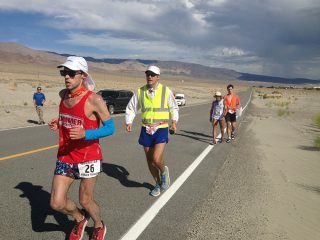
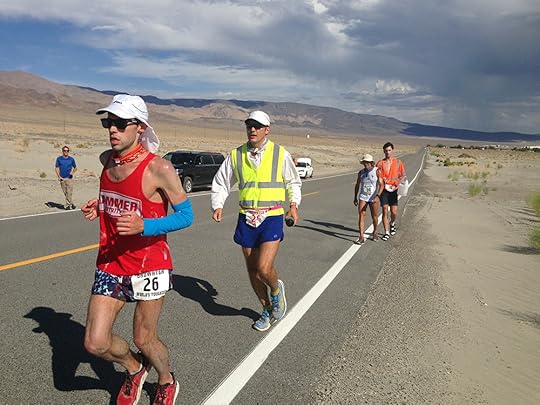
Pete Kostelnick (front) won his first Badwater 135 in 2015 and his going for his third consecutive win in the ultramarathon this year. Photo: Gabe Elizondo
There were times in recent months that Pete Kostelnick didn’t want to get out of bed when the alarm called at 4:40 a.m. It didn’t seem like an intelligent decision. On the one hand, there were blankets, warmth and sleep. On the other, there was a dark, cold and hostile environment outside his door in Hannibal, Missouri.
Yet each day, Kostelnick got up, laced up and headed out for a run.
“I’d think to myself, ‘Well, I woke up every morning at 3 of the run across America, and I always got up,’” he recalls. “So I think having that discipline for that run and knowing that there was no margin for error, I’ve brought that into my training. I think that’s been key. Once I get running, it’s like, ‘Man, this is easy. Instead of having 72 miles, I only have 16 miles to run this morning.’ It puts everything into perspective.”
Kostelnick, 29, is a financial analyst who figures he ran more than 9,500 miles in 2016. He decided to begin 2017 with a much more measured approach than in past years. After winning a second straight STYR Labs Badwater 135 ultramarathon in July of 2016 (while setting a course record in the process), Kostelnick then shattered the 36-year-old mark for fastest cross-country run. He beat it by four days, averaging more than 72 miles a day as he ran across the U.S. from San Francisco to New York City in 42 days, 6 hours and 30 minutes.
It was a dynamic double. But, the cross-USA run that finished in late October took its toll.
For a few months, his legs were swollen and tight. He believes he probably suffered nerve damage in his feet. For a long time, he felt sluggish. He entered just one individual race this year, a 24-hour endurance run in Missouri in mid-March, and ran just over 25 miles.
“It took a long time,” Kostelnick says. “I would say it wasn’t until April that I felt back in the groove of enjoying running again. It was a good six-month process of getting back.”
He adds that it was tough to acknowledge he’d have to take things slower for a while. “I thought with my high-mileage training, maybe the recovery for me might go a little bit better,” Kostelnick says with a laugh.
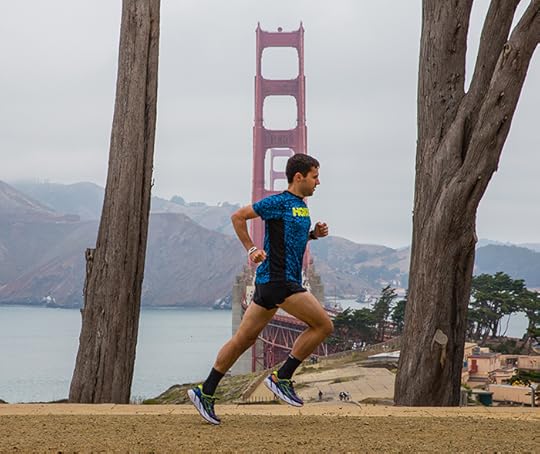
Pete Kostelnick on a training run in San Francisco shortly before he started his run across the U.S. last year. Photo: Justin Britton
But as the weather warmed up, so did Kostelnick. On Facebook in April he wrote the “lion has been awoken.” He started ramping up his mileage and feeling strong. Later that month, he teamed up with Jon Kuehler to win the 81-mile Badwater Salton Sea team event in a record 14 hours, 4 minutes and 20 seconds.
Since then, he’s done plenty of 200-mile weeks, preparing for his two big goals of 2017. First, to help the U.S. six-man team win the IAU 24-Hour World Championships in Belfast, Northern Ireland, that begins Saturday, July 1. Second, to come back strong just over a week later on July 10 to defend his title in the 135-Mile Badwater ultramarathon from Death Valley to Mt. Whitney, Calif.
Kostelnick knows it will be a challenge, but he’s had the two events on his calendar for a year. His 24-hour best is 163.6 miles, which he’d like to improve. He also has the U.S. record of 172 miles set by Mike Morton as a target, but doubts he can break it.
“To say I’m ready to jump up 10 miles, that’s a big jump, especially for my first race back,” he says. “So I think somewhere between 163 and the mid- to upper 160s, that’s kind of the goal at this point.”
Then he has just over a week to be ready for Badwater, and he’s not sure how he’ll feel after Belfast. Plus, he says, in a race of 135 miles with intense heat and elevation changes, anything can go wrong. But, he’s not going to be running just to say he ran it.
“I would love to win three in a row,” he says. “I don’t want to get ahead of myself and be disappointed if I don’t win, but if there’s a chance to win, if everything lines up, I’d love to go for that third win in a row. But you need things to go your way. So being one of 100 (entrants), to have everything go your way three times in a row, it would be something special.”
No man has won three Badwater 135 races in a row since Marshall Ulrich from 1991-1993. Jamie Donaldson won three straight women’s titles from 2008-2010.
One thing he’s not expecting to do, however, is break the record he set last year of 21 hours, 56 minutes, 32 seconds. He says if he tried, he’d probably go out too fast and flame out.
For now, after not racing seriously since his Badwater victory a year ago, Kostelnick is eager to face two steep challenges back-to-back.
“I love it. It’s so much going on, you really don’t have time to think,” he says. “In any sport when you don’t have time to think, you kind of just do.”
RELATED: 5 Pro Tips On Moving Up to Ultras
The post Ultrarunner Pete Kostelnick Returns to Racing After His Run Across the U.S. Record appeared first on Competitor.com.
Why Running Is Good for Addiction Recovery

Besides being a highly rewarding exercise that strengthens the heart and respiratory system, running brings unique physical and mental benefits to those struggling with excessive stress—and with drug addiction.
Most people who struggle with addiction are looking for an easy means of relieving pain or stress. By providing an alternate, healthier method of relief and mood improvement, running and other aerobic exercise helps suppress drug cravings and reduce temptations to relapse. It also can help remedy other health problems caused by addiction.
Let’s take a closer look at why running is good for addiction recovery.
The Positive Effects Running Can Have on Addiction Recovery
Many physical benefits of running are obtainable in a short period of time, such as increased stamina, weight loss and stronger heart and lungs. However, the first improvements noticed are typically mental. These include:
A strong sense of increased positive feelings. Known as a “runner’s high” vigorous exercise increases the brain’s endorphin and dopamine levels, which makes you feel better.
Reduced everyday depression. (In cases of addiction, depression is typically a factor and often an actual accompanying illness.)
Reduced cravings for unhealthy foods and drugs.
Increased sense of being in control, which reduces the chronic sense of helplessness and frustration common to most addicts.
Clearer thinking.
Higher self-esteem, confidence and sense of achievement.
Greater hope for the future.
Increased learning ability.
Lower relapse rates in addiction recovery.
There’s even some evidence that running helps mitigate drug-inflicted brain damage.
Some people find running more effective than discussion-based support groups in providing motivation to maintain sobriety. Running is capable of generating a “support group” of its own. Like any favorite activity, it offers opportunities to meet others with similar interests who encourage each other toward success.
Finally, unlike many “striving to get ahead” approaches to life, running is fun and exhilarating. In most cases it leaves only “good fatigue” behind.
RELATED: 10 Amazing Benefits of Running You Might Not Have Known
Incorporating Running into Your Recovery Journey
Even with its benefits, taking up running isn’t an instant-fix solution. Additionally, it can even be dangerous if handled wrong.
If you’re new to running, you should consult with a doctor before starting an exercise program, especially if you’re over 40. Too much too soon can lead to physical injury, which can set you back several days or weeks. When you’ve also had a substance-abuse problem (particularly one that goes back several years), there’s the additional risk you may have done lasting damage to your heart or other organs. This can further weaken your body’s ability to manage aerobic exercise. When seeking advice from a doctor, be completely open about your history—no matter how embarrassing it may feel.
Once you get medical approval for regular running, take steps to stay fit and stick to a program. Wear loose, perspiration-absorbent clothing and good running shoes. Plan for staying hydrated, especially as the temperatures climb up. In general, it is important to keep healthy habits in your diet and sleep.
Another great way to stay committed is to set a weekly running schedule. If you run only when you “feel like it,” you will increase the risk of injury and fatigue when you do get out—if the whole program doesn’t die of neglect first. Keep a schedule convenient to your other commitments and your personal periods of peak energy. Some people run best in the morning, while others feel better after work.
New runners should also try to find a training partner. This will keep you motivated and make things more fun overall. If you don’t know anyone who’s likely to be interested, join a running club.
Running Tips For A Recovering Addict
There are also a few sensible running points specific to the recovering addict.
Avoid routes that take you past bars, beer stands or any other venue where chemical substances are easily available—especially places you frequented during your “drunk days.”
Don’t be overly ambitious or perfectionistic. A common risk factor for both addiction and relapse is being too hard on oneself for not always getting everything exactly right. As in addiction recovery, focus on doing the right thing one day at a time.
Be careful not to replace one addiction with another. Even though running is healthy overall, it can become a means of avoiding or putting off legitimate responsibilities. In some cases, “exercise addiction” can aggravate mental disorders or lead to life-threatening physical conditions. Keep other interests in your life, and give special attention to relationships. Discuss your individual weak spots with your doctor, therapist and/or support group.
Running is good for addiction recovery and for guaranteeing a sober, healthy future. You’ll do even better if you think of it not as running away from addiction, but as running toward that brighter future.
RELATED: A Recovering Alcoholic’s Journey to the New York City Marathon
****
Candice Rasa, LCSW, is Clinical Director of Beach House Center for Recovery , a drug and alcohol addiction rehabilitation center in Juno Beach, Florida. She has more than 10 years of experience in the mental health and substance-abuse arena, and supports healing in the clients she serves from a solution focused, strengths-based client care.
The post Why Running Is Good for Addiction Recovery appeared first on Competitor.com.
June 28, 2017
BOA’s Dial Lacing System is Coming to Popular Running Shoe Brands
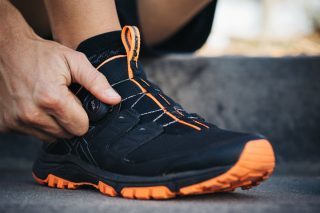
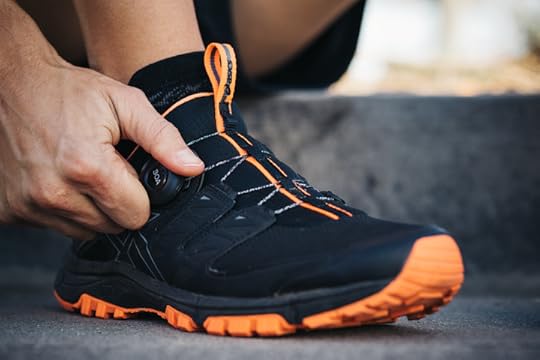
ASICS GEL-FujiRado, Photo: Courtesy of BOA
BOA’s ingress into the super-competitive run space started—literally—with a sprint.
Already well-established in dozens of industries, including snowboard, golf and cycling, the manufacturers of the innovative dial lacing system met up with New Balance five years ago with the very specific intention of adding their system to track spikes for sprinters.
It took more than 80 iterations, but the Denver-based company collaborated with New Balance and built a track shoe worthy of sprinters at the nearby Olympic Training Center in Colorado Springs, Colo.

New Balance Vazee Sigma, Photo: Courtesy of BOA
“It started as a niche project with New Balance and we had to earn the credibility of the athletes,” says Clark Morgan, who handles BOA’s running accounts. “We had to show that it could perform at this level. But the long-term goal was always for the mass consumer.”
From there, the sprint slowed to a deliberate and measured tip-toe. Competitor magazine was granted a tour of BOA’s Denver facility this week for a behind-the-curtain look at the five-year process that brought the running shoes from prototype to shelves. There were a couple of “soft openings” along the way. But BOA’s official entrance into the shoe space happened earlier this month with the launch of the ASICS GEL-FujiRado ($130).

Photo: Courtesy of BOA
Several more collaborations with Under Armor, New Balance and ASICS will be released in the coming months.
The testing process of bringing the shoes to market was a brutal one—on the testers and the shoes. But the running shoes also had the benefit of 17 years of BOA’s trial and errors in all of their other categories. The laces, for example, are obviously a different material than the steel thread used for snowboard boots. But the engineers were tasked with making a lacing system for running that was just as strong.
If you can think of an inhospitable environment, chances are the BOA folks have also. From sweltering heat and humidity to mud slurries and freezing temperatures, thousands of hours were put into breaking the lacing system, fixing it, and then breaking it again.

One of dozens of environmental tests. This one is how the BOA lacing system performs after being soaked in cold mud. Photo: Kevin Gemmell
“You’re not going to have a catastrophic failure,” Morgan says. “We’re always willing to make mistakes, so long as we’re soling them along the way. ‘Probably going to be fine’ doesn’t work for us. We’ve taken testing to a whole other level. We have more than 1,800 hours of field work just on our product. Then we turn it over to ASICS, New Balance and Under Armor and give them the chance to try to break it.”
When they finally reached that point, they knew they were ready to bring the shoes to market.
“If you have the blessing of those big companies that can help pioneer something like this, it validates it out of the gate,” says Kevin Stayart, marketing manager for BOA’s athletic division. “A runner is a very fickle athlete. It’s very powerful when you can convert a runner into a (particular) model. A subtle overlay change changes their entire perspective on a shoe. If we can earn the respect of New Balance, ASICS and Under Armor, it’s the first hurdle. The second hurdle is the consumer.”
RELATED: 3 Ways To Lace Up Your Running Shoes
The post BOA’s Dial Lacing System is Coming to Popular Running Shoe Brands appeared first on Competitor.com.
Ryan Hall's Blog
- Ryan Hall's profile
- 21 followers



